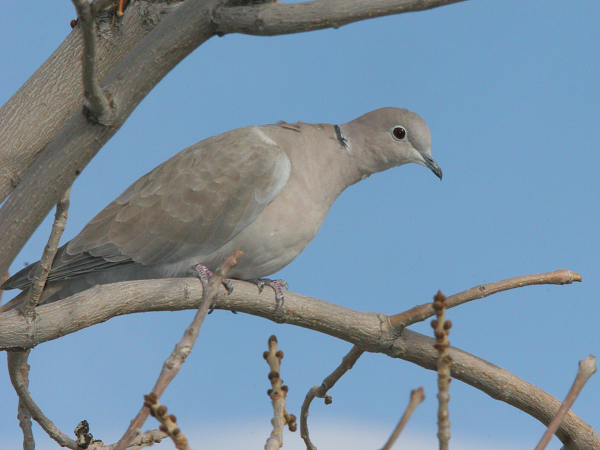
Date: 2005-11-25
Lens: Canon 300mm IS F4 + 1.4x II Converter

 Eurasian Collared-Dove
Streptopelia decaocto
Eurasian Collared-Dove
Streptopelia decaocto
 Description
Description
The scientific name, Streptopeleia decaocto, means a collar (streptos) dove (peleia). In Greek mythology, Decaocto was an overworked, underpaid servant girl whom the gods changed into a dove so she could escape her misery. The dove�s call is said to echo the mournful cries of Decaocto's former life.
Introduced to the Bahama Islands in the 1970s, this native of Asia quickly spread to Florida, and is expanding its range across the US. Because of its close resemblance to the feral Ringed Turtle-Dove, which occurs in Florida, the invasion of the Eurasian Collard-Dove went unnoticed for many years. It is now well established throughout the southeastern United States and is spreading across the continent.
Gray upperparts. Pale gray head and underparts. Thin black collar with white upper border. Dark primaries. Long, squared tail. Tail underside has a black base with white tips. Tail upperside is gray with white outer tips. Sexes similar. 11 to 12 inches in length.
Open, dry areas with low scrub and scattered trees. Native to Asia.
 Nesting
Nesting2 white eggs. The eggs have a 14-16 day incubation period. Fledging occurs in 15-18 days. The nest is flimsy and made from twigs. The nest is built in a tree, on a building ledge, or in a thick bush. The Eurasian Collared-Dove breeds nearly year round in its native range.